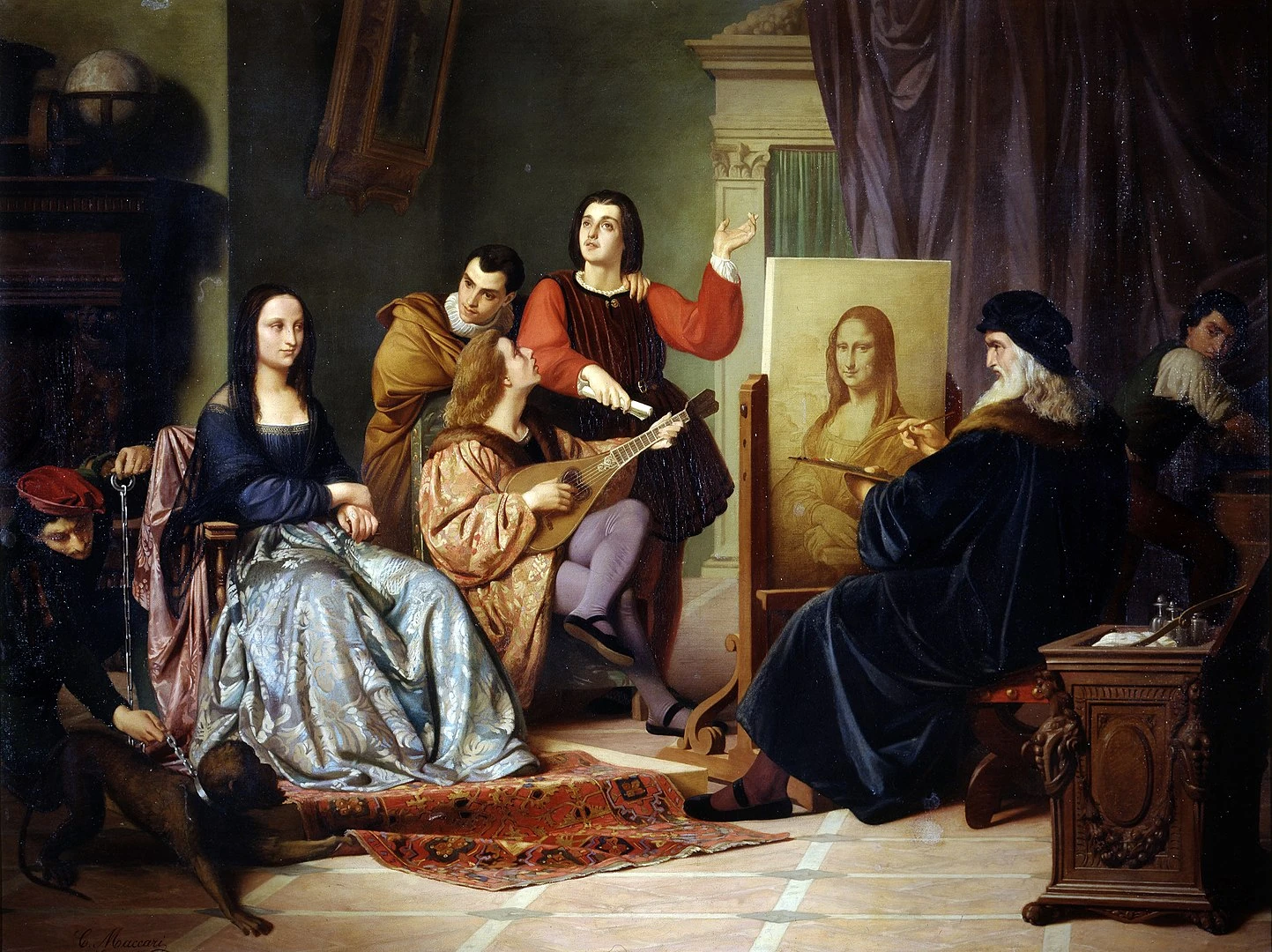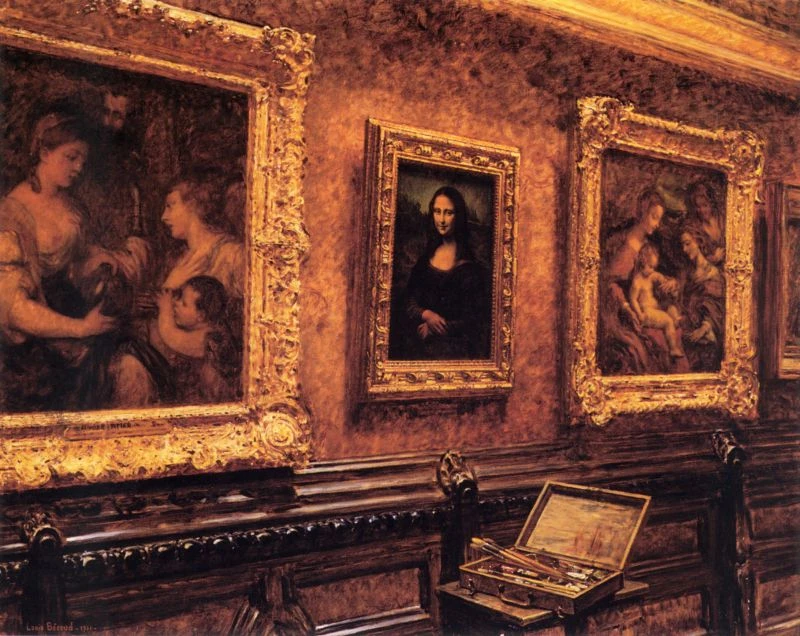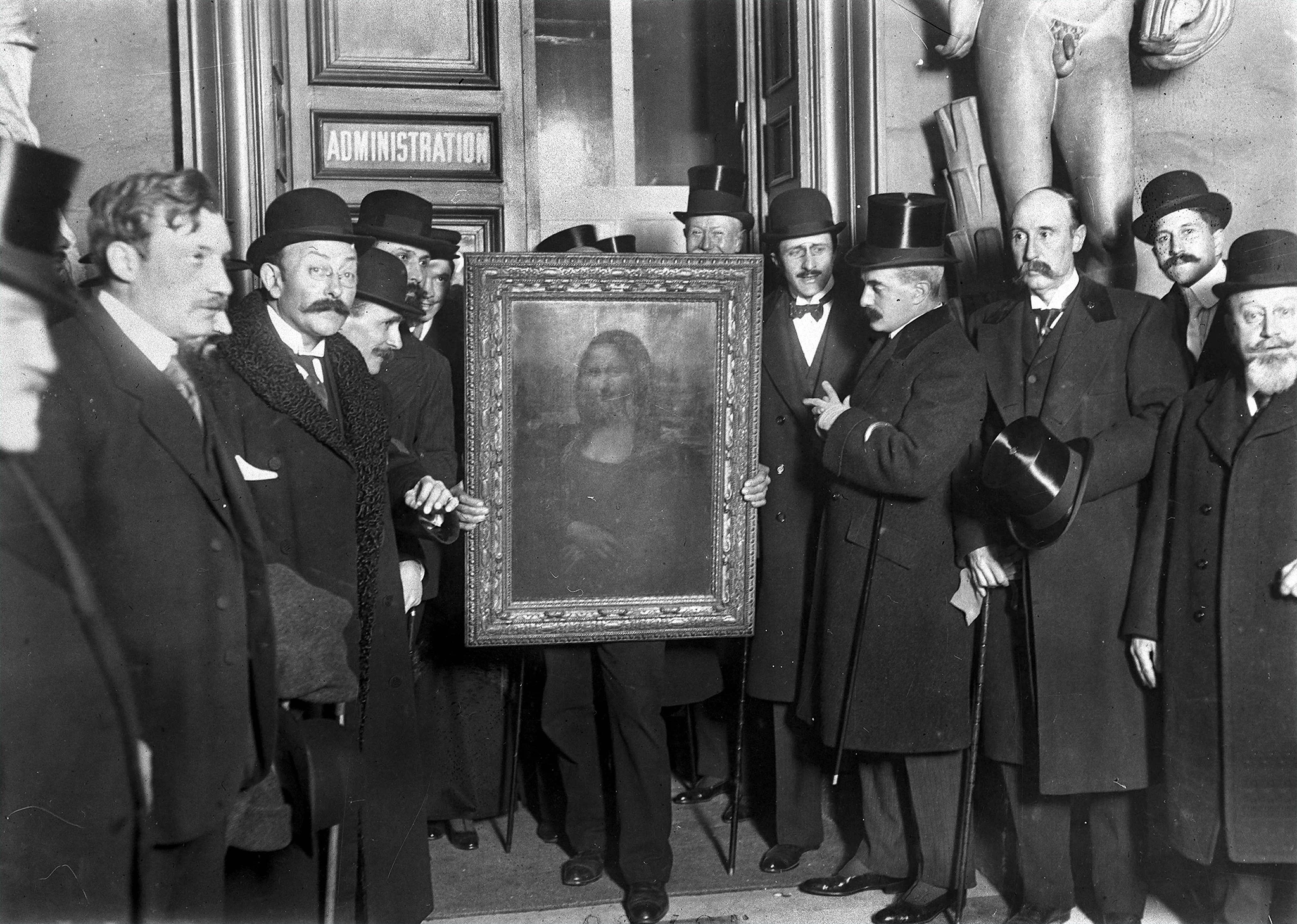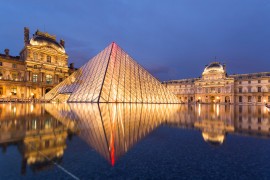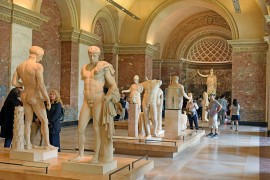Mona Lisa: the rare work of a genius with a thousand talents
Leonardo da Vinci, was not a painter with a prolific output - engineering, anatomy or science fascinated him just as much. But, although he produced few paintings compared to his contemporaries, he left his mark on history with some exceptional works. The Mona Lisa, or Mona Lisa, painted on a panel of poplar measuring 53 cm by 77 cm, is one of his most precious works. The great Leonardo loved this portrait so much that he never parted with it, even taking it with him when he moved to the French court, close to King François I. According to legend, it was in the king's arms that he died. This painting will never leave the French royal collections.
Leonardo da Vinci painting the Mona Lisa / Image chosen by Monsieur de France: By Cesare Maccari 1863- Tú Lisa, yo Conda, Domaine public, https://commons.wikimedia.org/w/index.php?curid=50940619
A canvas that follows the powerful and crosses the storms of History
The Joconde has traveled with the kings of France. Exhibited at Fontainebleau, then at the Tuileries, in Versailles. It arrived at the Louvre with the creation of the Muséum central des arts in 1793, after the Revolution. But this painting was never sedentary.In 1870, during the siege of Paris, it left for Brest. During the two world wars, she flees south: Toulouse, Montauban, Chambord. She survives conflicts, the fall of empires, and retains her enigmatic look throughout her journey.
1911: the theft of the Mona Lisa
The Mona Lisa at the Louvre painted a few months before it was stolen from its 1911 location. She was not alone on her wall, at the time, as museography required in those days / Painting by Louis Beroud in 1911 http://france.jeditoo.com/IleDeFrance/Paris/1er/Louvre.htm, Domaine public, https://commons.wikimedia.org/w/index.php?curid=3739943
On August 22, 1911, painter Louis Béroud came to sketch at the Louvre and discovered... an empty wall. The Mona Lisa has disappeared. It's shock. Prefect Lépine - also creator of the inventor's contest that bears his name - mobilizes nearly 60 police officers. Fingerprints are taken, 257 employees are questioned, and even Guillaume Apollinaire is briefly incarcerated on suspicion of complicity. The magazine L'Illustration offers 50,000 francs to recover the work, proof that the affair goes beyond a simple news item: it becomes a national event.
A theft by Vincenzo Peruggia
The thief is found... two years later. He is Vincenzo Peruggia, an Italian glazier. Ironically, it was he himself who, while installing glass to protect certain works, had spotted the location. He kept the Mona Lisa hidden until 1913, when he tried to resell it to a Florentine antique dealer. The buyer, stunned to discover the world's most famous painting, immediately alerts the Italian police. The arrest is swift. The Mona Lisa is recovered, intact, and repatriated to France... first class.
The Mona Lisa back at the Musée du Louvre in 1913/ Photo chosen by monsieur de France: By Roger-Violett - https://www.gettyimages.com/detail/news-photo/people-gather-around-the-mona-lisa-painting-on-january-4-news-photo/80912841?adppopup=true, Domaine public, https://commons.wikimedia.org/w/index.php?curid=98633027
The Mona Lisa today: global star and visual icon
Since that triumphant return, the Mona Lisa has never been stolen again. And she hasn't moved since 1974, when she last visited Japan, 11 years after a triumphant tour of the USA. So she's still at the Louvre, photographed by millions of visitors every year, protected behind glass and framed by permanent security. Her universal celebrity is due as much to her mysterious smile as to the myth born around her. Her gaze seems to follow the viewer, her posture is incomparably gentle, which means that beyond the painting, the Mona Lisa has become a world symbol of art, a pop reference, a subject of parody... and an enigma that time only deepens.

